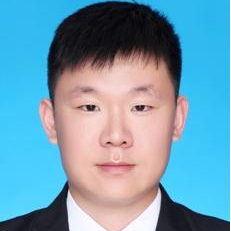Study on Photoelectric Properties and Applications of Nanostructured Materials
A special issue of Nanomaterials (ISSN 2079-4991). This special issue belongs to the section "Nanophotonics Materials and Devices".
Deadline for manuscript submissions: closed (30 March 2024) | Viewed by 1464
Special Issue Editors
Interests: microelectronic packaging; micro/nano/optoelectronic devices; cross scale modeling and design; life prediction and reliability design; dynamics design; lightweight technology
Interests: reliability of electronic packaging; thermal management; friction and wear; advanced structural materials; computational materials
Special Issues, Collections and Topics in MDPI journals
Interests: semiconductor materials; optoelectronic devices; ultra-thin conductive film; calculated material
Interests: advanced functional materials and structures; thermal management; computational materials; ultrafast laser processing
Special Issues, Collections and Topics in MDPI journals
Special Issue Information
Dear Colleagues,
The advantages of photoelectric properties greatly expend applications of nanostructured materials in fields of biomedicine, optoelectronic devices, solar cells, and photocatalysis. Nanomaterials have a variety of structures such as films, nanowires (rods), nanosheets, nanoparticles, and quantum dots. Through precise synthesis, the regulation of nanostructures, and the control of the self-assembly of nanomaterials, the regulation of light absorption (reflection or transmission or excitation) bands and the enhancement of electrical properties can be realized, promoting the continuously improving photoelectric conversion efficiency and highly developed functionalization. Approaches such as defect recombination and surface modification are proven to be effective at inducing nanostructures for advanced photoelectric properties. Considering that the considerable heat generated during energy conversion would seriously affect photoelectric properties, reliability, and lifetime, thermal management is also critical for the design of nanostructured materials, especially for application in power devices.
We are pleased to invite you to contribute original and critical articles on the photoelectric properties and related applications of nanostructured materials.
This Special Issue aims to introduce the latest research on photoelectric properties and related applications of nanostructured materials. The photoelectric properties of nanostructured materials have broad application prospects in biomedicine, semiconductor optoelectronic devices, and new energy, and their further development is of great significance for breakthroughs in many fields.
In this Special Issue, original research articles and reviews are welcome. Research areas may include (but are not limited to) the following:
Synthesis and characterization of nanostructures, modification and enhancement of photoelectrical properties, absorption, reflection, or excitation properties of light, generation, transport, and transfer of charge carriers, applications of nanostructures in biomedicine, semiconductor optoelectronic devices, new energy, surface modification of nanostructures, interfacial charge transfer in nanostructured materials, preparation of new nanomaterials, and thermal management.
We look forward to receiving your contributions.
Prof. Dr. Ping Yang
Prof. Dr. Yunqing Tang
Dr. Yanfang Zhao
Dr. Bing Yang
Guest Editors
Manuscript Submission Information
Manuscripts should be submitted online at www.mdpi.com by registering and logging in to this website. Once you are registered, click here to go to the submission form. Manuscripts can be submitted until the deadline. All submissions that pass pre-check are peer-reviewed. Accepted papers will be published continuously in the journal (as soon as accepted) and will be listed together on the special issue website. Research articles, review articles as well as short communications are invited. For planned papers, a title and short abstract (about 100 words) can be sent to the Editorial Office for announcement on this website.
Submitted manuscripts should not have been published previously, nor be under consideration for publication elsewhere (except conference proceedings papers). All manuscripts are thoroughly refereed through a single-blind peer-review process. A guide for authors and other relevant information for submission of manuscripts is available on the Instructions for Authors page. Nanomaterials is an international peer-reviewed open access semimonthly journal published by MDPI.
Please visit the Instructions for Authors page before submitting a manuscript. The Article Processing Charge (APC) for publication in this open access journal is 2900 CHF (Swiss Francs). Submitted papers should be well formatted and use good English. Authors may use MDPI's English editing service prior to publication or during author revisions.
Keywords
- nanostructured materials
- low-dimensional materials
- surface modification
- hetero-/homo-junction
- biomedical imaging
- photoelectrocatalysis
- photoelectric conversion
- photoelectric sensing
- thermal management
- semiconductor optoelectronic devices









